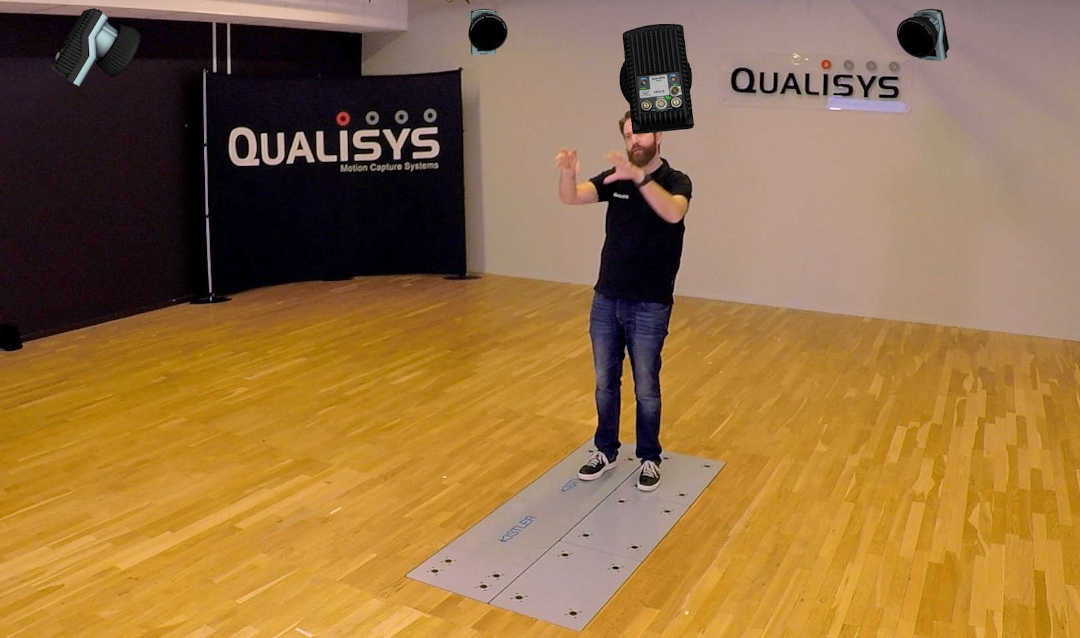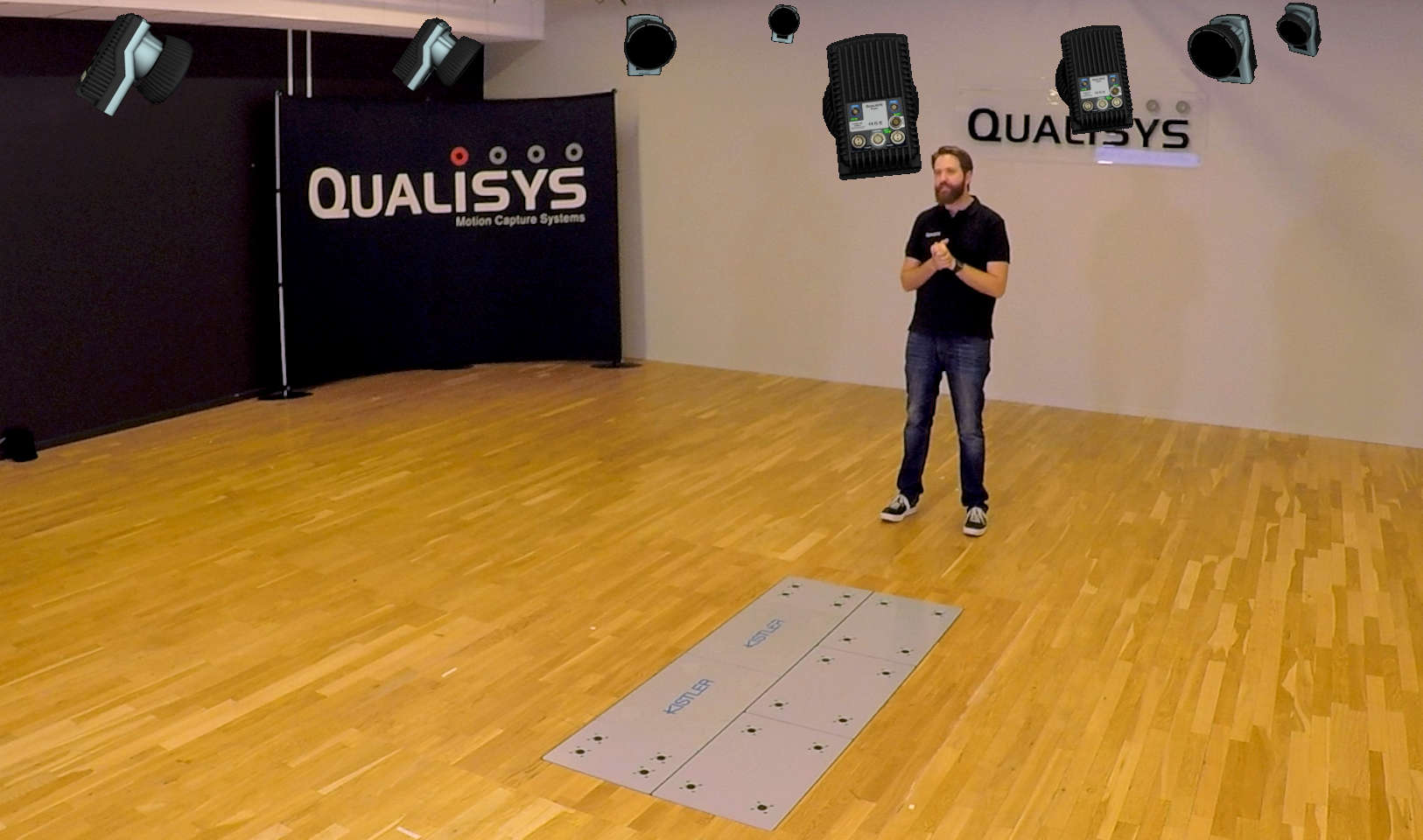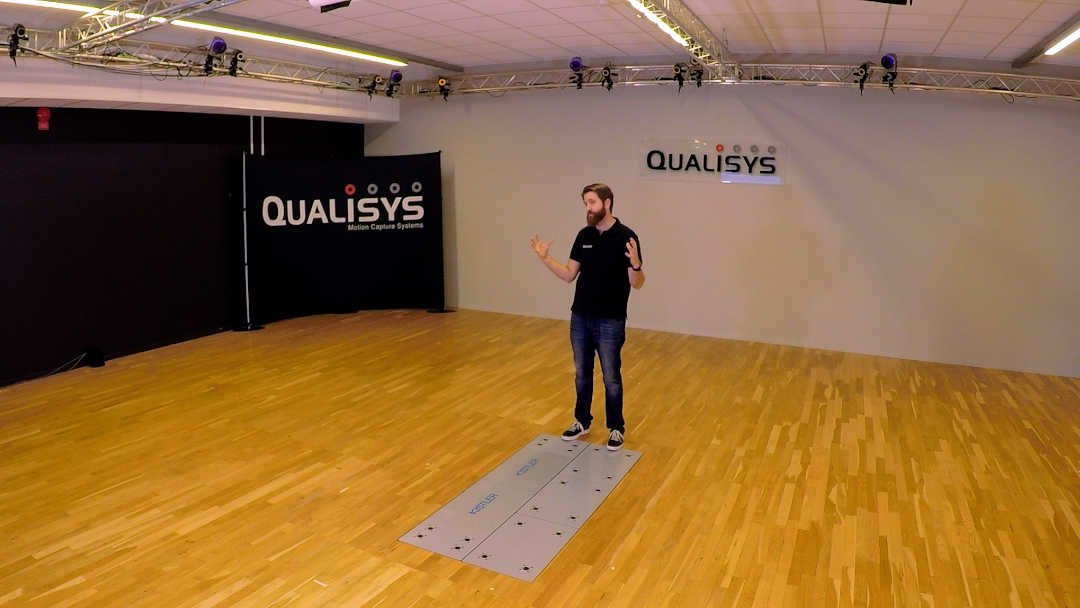Lab examples
This section outlines the ideal camera configurations for some of the most common types of motion capture labs. Even if your layout or application isn’t covered directly here, the same concepts of camera angles and positioning can be applied to other setups.
Gait lab setup
One of the most common setups for motion capture tests is a gait lab. A typical system is composed of 8-10 cameras positioned to look down on a long, narrow volume. A camera is placed in each corner, two cameras are spaced evenly along each of the long sides, and a final optional camera can be positioned at each end.

Corridor setup
Another common type of motion capture lab uses a corridor setup to measure longitudinal motions like running or horse trotting. While the volume for a corridor measurement is similar to the volume for a gait lab, this configuration can be replicated over long distances.
In a corridor setup, cameras are arranged in groups of four pointing in at the volume from the sides. In each group of four, the first pair of cameras is angled forward and the second pair is angled backward as if they were pointing in from the four corners of a square.

The following group of four overlaps the one before, so that you will end up with two pairs of cameras angled forward, then two pairs of cameras angled backward. Continue to add overlapping groups of four until the whole corridor volume is covered. To improve tracking, you can also add a camera to each end.

Big lab setup
For a large room recording big movements or a wide variety of motions, the cameras should be placed as high as possible. Begin by mounting a camera in each corner of the room, then fill in on the sides and ends to get the most coverage possible.
